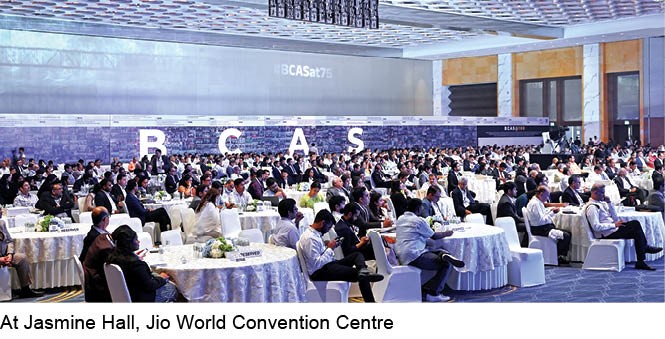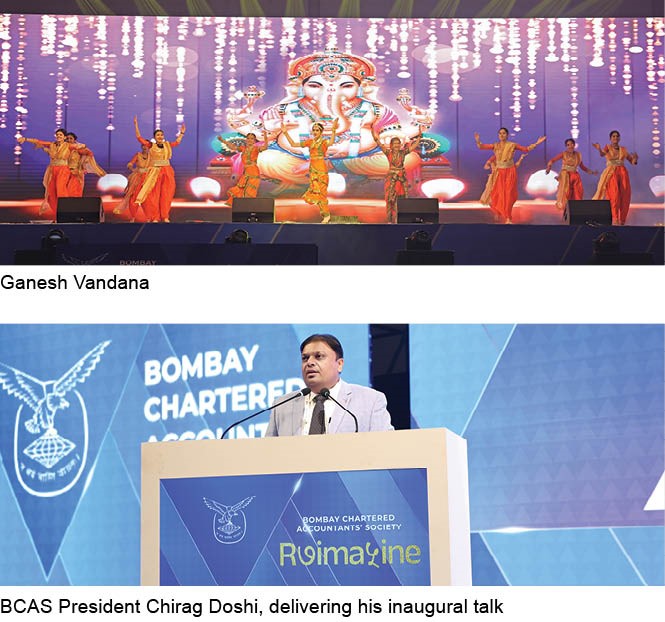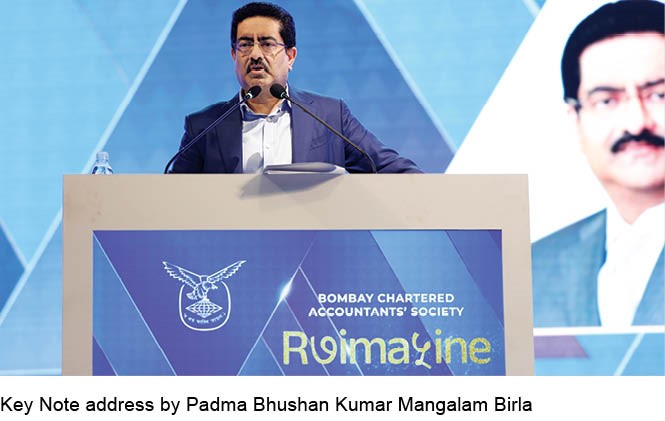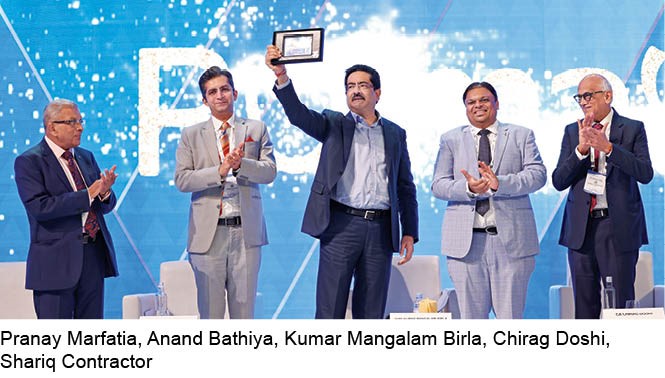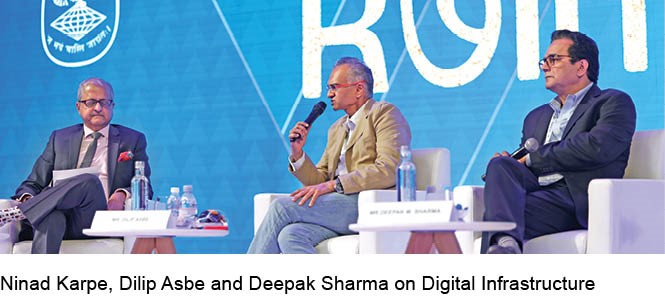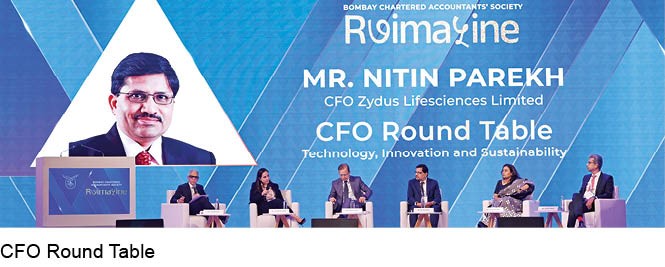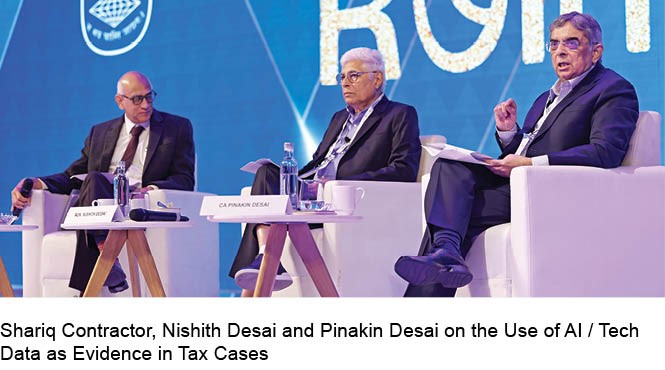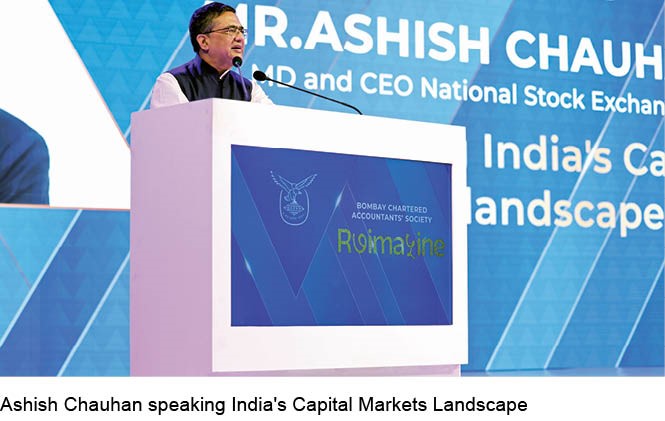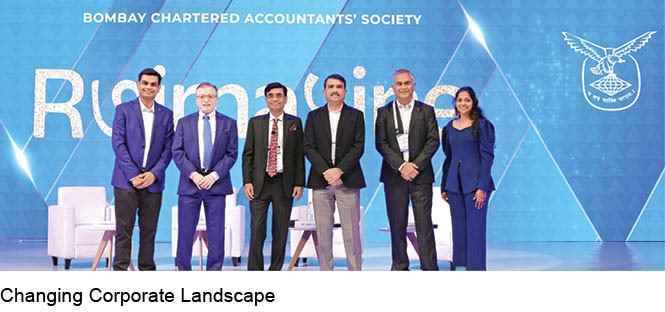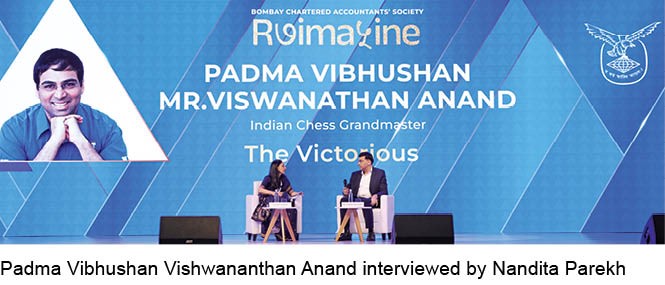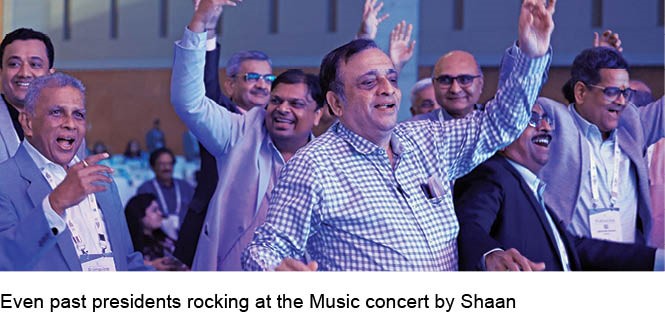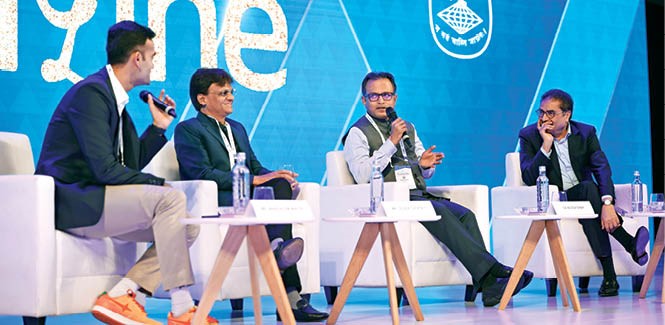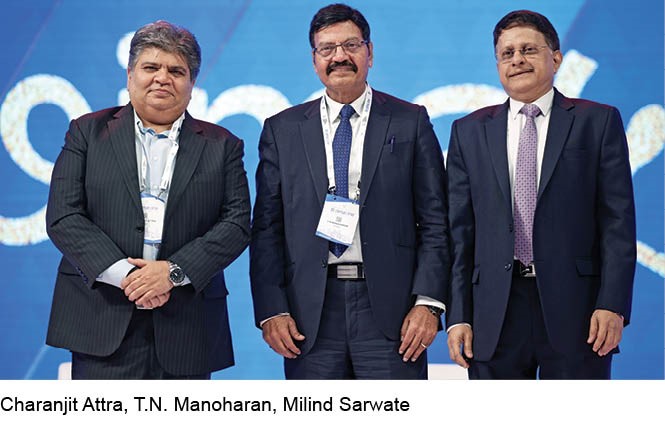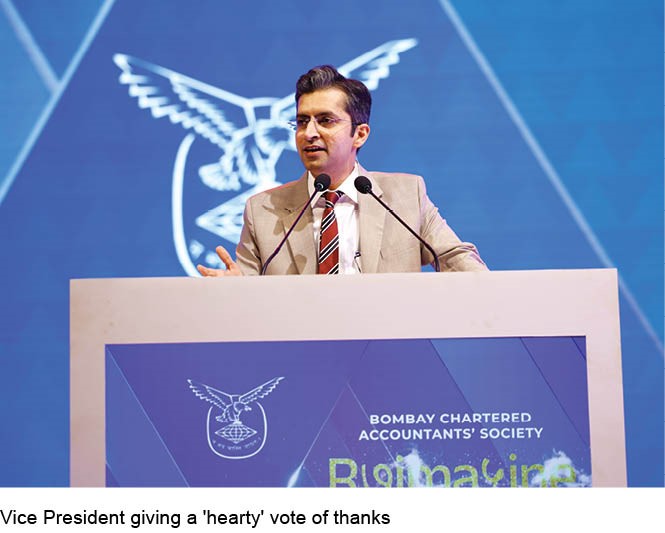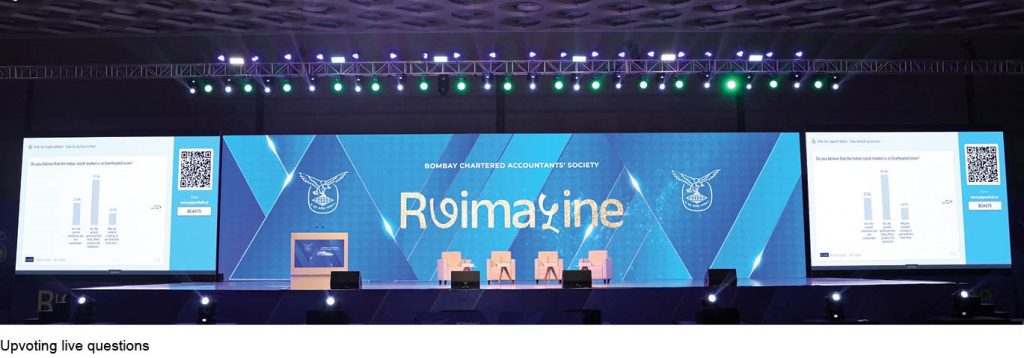I. INTRODUCTION
The Finance (No. 2) Act, 2024, inserted new sections 148, 148A, and 151 relating to the reopening of assessment in the Income Tax Act, 1961 (“the Act”).
Sections 148 inter alia provides for procedure for reopening of assessment and section 148A inter alia provides for passing of an order before issuance of notice for reopening of assessment under section 148. As per these sections, the acts of issuing notice for reopening of assessment and passing an order before the issue of notice for reopening of assessment can be done by the Assessing Officer only after obtaining prior approval of the specified authority laid down under section 151, which states that specified authority for section 148 and 148A shall be the Additional Commissioner or the Additional Director or the Joint Commissioner or the Joint Director as the case may be.
In this write-up, an attempt is made to show the manner in which the rigours of provisions relating to obtaining prior approval for the reopening of assessment have been toned down as per the recent amendment, and thus, the said provisions have become an empty ritual.
II. IMPORTANT OBSERVATIONS OF THE COURTS IN THE CASE OF REOPENING OF ASSESSMENT
It would be apposite to refer to the important observations of the Courts in the case of reopening of assessment as under :
- The Gujarat High Court in the case of P. V. Doshi vs. CIT (1978) 113 ITR 22 has held that provisions relating to the reopening of assessment are to lay down the necessary safeguards in the wider public interest by way of fetters on the jurisdiction of the authority itself, and they could not be said to be merely for the private benefit of the individual assessee concerned.
- The Supreme Court in the case of ChhugamalRajpal vs. S. P. Chaliha (1971) 79 ITR 603 has held that the provisions of section 151 must be strictly adhered to because it contains important safeguards.
- The Supreme Court in the case of ITO vs. LakhmaniMewal Das (1976) 103 ITR 437 has held that the powers of the Income Tax Officer to reopen assessment, though wide, are not plenary. The reopening of the assessment after the lapse of many years is a serious matter. The Act, no doubt, contemplates the reopening of the assessment if grounds exist for believing that the income of the assessee has escaped assessment.
- The Supreme Court, in the case of has observed, “We must keep in mind the conceptual difference between power to review and power to reassess. The Assessing Officer has no power to review; he has the power to reassess. But reassessment has to be based on the fulfilment of certain preconditions, and if the concept of “change of opinion” is removed, as contended on behalf of the Department, then, in the garb of reopening the assessment, the review would take place”.
- The Bombay High Court, in the case of German Remedies Ltd. vs. DCIT (2006) 285 ITR 26, has held that it is a settled position of law that though the powers conferred under section 147 of the Income Tax Act for reopening the concluded assessment are very wide, the said power cannot be exercised mechanically or arbitrarily.
Thus, in spite of the fact that Courts have held that the provisions relating to the reopening of assessment are to lay down the necessary safeguards in the wider public interest, by the recent amendments by the Finance (No. 2) Act, 2024, the provisions relating to obtaining approval of the specified authority for the reopening of assessment, which acted as an important safeguard, have been watered down to facilitate carrying out of reassessment by the assessing authorities, by toning down the rigours of the provisions relating to “approval” as discussed hereafter.
III. AMENDMENT OF SECTION 151 OF THE INCOME-TAX ACT
It would be apt to have the background of the following provisions of the Act before discussing the provisions relating to approval as provided under section 151 of the Act.
- Earlier, prior to 31st March, 1989, the definition of the “Assessing Officer” under section 2 (7A) of the Act included only the Assistant Commissioner, the Income Tax Officer or the Deputy Commissioner. Thereafter, consequent to subsequent amendments to sub-section (7A) to section 2 from time to time, other officers were included in the definition of “Assessing Officer”, which has been stated hereafter.
- (i) Presently, subsection (7A) to section 2 of the Act, which defines “Assessing Officer” as meaning the Assistant Commissioner or Deputy Commissioner or Assistant Director or Deputy Director or the Income Tax Officer who is vested with the relevant jurisdiction by virtue of directions or orders issued under subsection (1) or sub-section (2) of section 120 or any other provisions of this Act and the Additional Commissioner or Additional Director or Joint Commissioner or Joint Director who is directed under clause (b) of sub-section (4) of that section to exercise or perform all or any of the powers and functions conferred on, or assigned to an Assessing Officer under this Act.
(ii) Sections 116 to 118 deal with the Income Tax Authorities, both quasi-judicial and executive. As per the notifications issued by the Board from time to time pursuant to powers vested in it under section 118, the hierarchy of these authorities is in the same order as provided in section 116. The relevant portion of the said section 116 has been reproduced as under, just to indicate which of these authorities fall within the ambit of the definition of “Assessing Officer” as per section 2 (7A) of the Act :
(a) xx
(aa) xx
(b) xx
(ba) xx
(c) xx
(cc) Additional Directors of Income Tax or Additional Commissioners of Income Tax or xx.
(cca) Joint Directors of Income Tax or Joint Commissioners of Income Tax or xx
(d) Deputy Directors of Income Tax or Deputy Commissioners of Income Tax or xx
(e) Assistant Directors of Income Tax or Assistant Commissioners of Income Tax
(f) Income Tax Officers
(g) xx
(h) xx
(iii) As per section 2 (28C), the Joint Commissioner includes an Additional Commissioner. Further, as per section 2 (28D), the Joint Director includes an Additional Director. Therefore, as per notification issued under section 118 r.w.s. 116, Joint Commissioner of Income Tax is subordinate to Additional Commissioner, but by virtue of section 2 (28C), the rank of Joint Commissioner and Additional Commissioner is at par. Similarly, as per notification issued under section 118 r.w.s. 116, the Joint Director is subordinate to the Additional Director, but by virtue of section 2 (28D), the rank of Joint Director and Additional Director is at par.
3. Under the then provisions of section 151 operative up to 31st March, 1989, no notice under section 148 could be issued :
a. After the expiry of eight years from the end of the relevant assessment year without the approval of the Board.
b. After the expiry of four years from the end of the relevant assessment year without the approval of the Chief Commissioner or Commissioner.
After the amendment of section 151 w.e.f. 1st April, 1989, the sanctioning authorities depended upon whether an earlier assessment was made under section 143 (3) or section 147 of the Act or not, and also the period after the expiry of the assessment year beyond which the assessment is reopened. The said section provided that where the notice is issued after the expiry of four years from the end of the assessment year, the approval of the Chief Commissioner or the Principal Chief Commissioner or the Principal Commissioner or the Commissioner was required.
From the above provisions, it is clear that where the assessment is reopened beyond the expiry of four years from the end of the assessment year, the approving authorities were not assessing authorities.
But sub-section (2) of section 151 permitted approval of certain Assessing Authorities where the assessment earlier made under section 143 (3) or section 147 is reopened within four years from the end of the assessment year. Thus, approving authorities and Assessing Authorities happened to be the same only in specified cases where the reopening of the assessment was made within four years from the end of the assessment year. It is submitted that the said provisions relating to the approval of assessing authorities were not in tune with the ratio of the Supreme Court decisions discussed hereafter. After the rationalisation of provisions relating to the reopening of assessment by the Finance Act, 2021, and further amended by the Finance Act, 2023, the approving authorities depended upon whether less than three years or more than three years have elapsed from the end of the relevant assessment year. But in both the said cases, the approving authorities were not assessing authorities. From the aforesaid discussion, it is clear that prior to the amendment made by the Finance Act, 2021 and the Finance Act, 2023, earlier section 151 made the distinction between the reopening of assessments after the expiry of a specified number of years or those which are not, as also whether assessment made earlier was under section 143 (3) or section 147. In such cases, where the reopening of assessment was made beyond a specified number of years or in cases where an earlier assessment was made under section 143 (3) or section 147, the approval of Superior Authorities, who were not assessing authorities, was required. The amendments to section 151 made by the Finance Act, 2021 and the Finance Act, 2023 mandated the approval of Superior Authorities who were not Assessing Authorities in all cases, depending upon whether the reopening of assessment was made within three years or beyond the period of three years from the end of the assessment year. Shockingly, as per the recent amendment to section 151 by the Finance (No. 2) Act, 2024, reopening of assessment can be made with the approval of specified authorities who happen to be the assessing authorities. The Superior Authorities, like the Principal Chief Commissioner, Principal Commissioner, etc., have not been included in the definition of “specified authority” under the amended section 151 of the Act.
The Uttaranchal High Court in the case of McDermott International Inc. vs. Addl. CIT (259 ITR 138) has held that the provision for sanction under section 151 is a safeguard so that the assessee need not be unnecessarily harassed by the Assessing Officer.
After the present amendment to section 151, the specified authorities for the purposes of sections 148 and 148A are the Additional Commissioner or the Additional Director or the Joint Commissioner or the Joint Director, as the case may be. The specified authorities enumerated under section 151 fall within the definition of “Assessing Officer” as per section 2 (7A) of the Act, the hierarchy of which is given as above as per section 116 of the Act. If approval of any of them is to be obtained, then the same must be sought by the Assessing Authority who is below their rank as specified authorities are themselves Assessing Officers. Thus, the Additional Commissioner or the Additional Director or the Joint Commissioner or the Joint Director, who are themselves the Assessing Authorities, can give approval to the Assessing Authorities below their rank to reopen the assessment. As all these authorities fall within the definition of “Assessing Officer” as per section 2 (7A) of the Act, the amendment made is manifestly arbitrary and unreasonable. This is for the reason that the Superior Authorities like the Board, the Principal Chief Commissioner of Income Tax, the Principal Commissioner of Income Tax, etc., have been removed from the definition of “specified authority” under section 151 of the Act, with the result that important safeguards in the form of approval of superior authorities as hitherto provided under the predecessor section 151 and earlier section 151, have been removed, with the result that the rigours of obtaining approval have been substantially toned down.
IV. MEANING OF ASSESSMENT AND APPROVAL AND MIX–UP OF ASSESSING POWER AND APPROVING POWER NOT PROPER
Black’s Law Dictionary defines “assessment” as the process of ascertaining and adjusting the shares respectively to be contributed by several persons towards a common beneficial object according to the benefit received. It is often used in connection with assessing property taxes or levying property taxes. The same Dictionary defines “approval” to mean an act of confirming, ratifying, assenting, sanctioning or consenting to some act or thing done by another. In the case of Vijay S. Sathaye vs. Indian Airlines & Others (AIR SCW 6213), the Supreme Court has held that approval means confirming, ratifying, assenting, and sanctioning some act or thing done by another. In the case of Manpower Group Services India Pvt. Ltd. vs. CIT (430 ITR 399), the Delhi High Court has held that approval means to agree with the full knowledge of the contents of what is approved and pronounce it as good. In the case of Dharampal Satyapal Ltd. V/s. Union of India (2018) 6 GSTROL 351, it has been observed by the Gauhati High Court that grant of approval means due application of mind on the subject matter approved, which satisfies all the legal and procedural requirements. In the context of the Land Acquisition Act, 1894, the Supreme Court, in the case of Vijayadevi Naval Kishore Bhartia v/s. Land Acquisition Officer (2003) 5 SCC 83, has drawn the distinction between the approving authority and the appellate authority. It has been observed that the Collector, after assessing the land, makes an award for its acquisition and works out compensation payable under section 11 of the said Act, and his award is sent to the Commissioner for his approval as per proviso to section 11 (1) of the said Act. It has further been observed that the said Act has not conferred an appellate jurisdiction on the Commissioner under the proviso to section 11 (1) of that Act, but the appropriate government exercises the appellate power. On the same logic, there is a distinction between the assessing authority and the approving authority. Thus, the assessing power, approving power and appellate powers are separate and distinct, and there should not be a mix-up of the said powers.
Reading section 151 of the Act with section 2 (7A) of the Act, the approving authorities, i.e. Additional Commissioner or the Additional Director or Joint Commissioner or the Joint Director, may act as the assessing authorities as also approving authorities. Further, the Joint Commissioner and Additional Commissioner are of the same rank. Again, the Joint Director and the Additional Director are of the same rank. It is a paradox that all these authorities perform dual functions of assessing and approving authorities.
In certain circumstances, the provisions of section 151 may become unworkable.
For example, the Assessing Authority who proposes to issue notice under section 148 may be a Joint Commissioner. How can the Additional Commissioner accord his sanction for reopening as both the Joint Commissioner and the Additional Commissioner are of equal rank? The same reasoning applies in the case of the Joint Commissioner and the Joint Director, as both are of equal rank. In such cases, the sanction for reopening would be vitiated by official bias, resulting in a violation of the principles of natural justice. Reliance is placed on the ratio of the following decisions :
i. In GullapalliNageshwara Rao vs. A. P. State Road Transport Corporation (Gullapalli I) AIR 1959 SC 308, the petitioners were carrying on the motor transport business. The Andhra State Transport Undertaking published a scheme for nationalisation of motor transport in the State and invited objections. The objections filed by the petitioners were received and heard by the Secretary, and thereafter, the scheme was approved by the Chief Minister. The Supreme Court upheld the contention of the petitioners that the official who heard the objections was ‘in substance’ one of the parties to the dispute, and hence, the principles of natural justice were violated.
ii. In Mahadayal vs. CTO AIR 1961 SC 82, according to the Commercial Tax Officer, the petitioner was not liable to pay tax, and yet, he referred the matter to his superior officer and, on instructions from him, imposed tax. The Supreme Court set aside the decision.
iii. Again, no man can be a judge in his own cause. If it is so, his action is vitiated.
V. LEGAL POSITION OF APPROVAL/SANCTION
1. In the case of the State (Anti–Corruption Branch) Government of NCT of Delhi &Anr. vs. R. C. Anand& Another (2004) 4 SCC 615, it has been held by the Supreme Court as under :
“The validity of the sanction would, therefore, depend upon the material placed before the sanctioning authority and the fact that all the relevant facts, material and evidence, including the transcript of the tape record, have been considered by the sanctioning authority. Consideration implies the application of the mind. The order of sanction must ex-facie disclose that the sanctioning authority had considered the evidence and other material placed before it. This fact can also be established by extrinsic evidence by placing the relevant files before the Court to show that all relevant facts were considered by the sanctioning authority.”
2. In the case of Chhugamal Rajpal v/s. S. P. Chaliha (Supra), which related to the reopening of assessment, it was observed by the Supreme Court that the report submitted by the Income Tax Officer under section 151 (2) did not mention any reason for concluding that it was a fit case for the issue of a notice under section 148 and the Commissioner mechanically accorded his permission. On these facts, it was held by the Supreme Court that important safeguards provided in sections 147 and 151 were lightly treated by the Income Tax Officer as well as by the Commissioner, and therefore, notice issued under section 148 of the Act was invalid and had to be quashed.
From the aforesaid decisions of the Supreme Court, it is clear that the approving / sanctioning authority, while approving the documents placed before him, should apply his mind, and the approval / sanction must ex–facie disclose that the approving/sanctioning authority had considered the evidence and other material placed before it. Therefore, if the assessment order is passed by the Additional Commissioner, who is also the Sanctioning Authority, the question arises as to how the aforesaid provisions would be workable. This question arises because the specified authorities stated under section 151 include the Additional Commissioner, who can happen to be the Assessing Officer, as per the definition of Assessing Officer under section 2 (7A) of the Act.
VI. PRIOR APPROVAL OF THE SUPERIOR AUTHORITIES – A CASUAL APPROACH
It is submitted that though the legislature considered obtaining approval / sanction of the Superior Authorities as a safeguard provided to the assessees, the Assessing Officers consider the said provisions of obtaining approval lightly, and the Superior Authorities also act casually in granting approval. The same is evident from the observations of the Bombay and the Allahabad High Courts in the below-noted cases.
- In the case of German Remedies Ltd. v/s. DCIT (2006) 287 ITR 494 in the context of obtaining sanction for the reopening of assessment, the Bombay High Court has observed as under :
“It is not in dispute that the Assessing Officer on 15th September, 2003, had himself carried file to the Commissioner of Income-tax and on the very same day, the rather same moment in the presence of the Assessing Officer, the Commissioner of Income-tax granted approval. As a matter of fact, while granting approval, it was obligatory on his part to verify whether there was any failure on the part of the assessee to disclose full and true relevant facts in the return of income filed for the assessment of income of that assessment year. It was also obligatory on the part of the Commissioner to consider whether or not the power to reopen is being invoked within 4 years from the end of the assessment year to which they relate. None of these aspects have been considered by him, which is sufficient to justify the contention raised by the petitioner that the approval granted suffers from non-application of mind. In the above view of the matter, the impugned notices and, consequently, the order justifying the reasons recorded are unsustainable. The same are liable to be quashed and set aside.” - In the case of PCIT vs. Subodh Agarwal (2023) 450 ITR 526 in the context of obtaining sanction for issuing notice to conduct search assessment, the Allahabad High Court has observed as under :
“In the instant case, the draft assessment order in 38 cases, i.e. for 38 assessment years placed before the Approving Authority on 31-12-2017, was approved on the same day, i.e., 31st December, 2017, which not only included the cases of respondent-assessee but the cases of other groups as well. It is humanly impossible to go through the records of 38 cases in one day to apply an independent mind to appraise the material before the Approving Authority. The conclusion drawn by the Tribunal that it was a mechanical exercise of power, therefore, cannot be said to be perverse or contrary to the material on record.”
VII. CONCLUSION
Though the specified authorities of the rank above the assessing authorities can give their approval/sanction for the issue of notice for reopening of assessment under section 148 and passing of order before the issue of notice under section 148 for the reopening of assessment under section 148A, there will not be any accountability as all of them are the Assessing Officers who, perform their duties sitting in the offices usually situated in the same floor of a building. There are chances of getting substantive irregularities getting cured as superior Authorities, such as the Principal Chief Commissioner, Principal Commissioner, etc., have no role to play in giving approval / sanction. Thus, the provisions relating to obtaining prior approval have become an empty ritual. The obtaining of prior approval in such cases may also suffer from a bias, and there is every chance of assessees being harassed by the Assessing Authorities. See the observation of the Uttaranchal High Court in the case of McDermott International Inc. vs. Additional CIT (Supra). Further, the Supreme Court in the case of Manek Lal v/s. Premchand AIR 1957 SC 425 has observed that reasonable apprehension or reasonable likelihood of bias is a vitiating factor.
One is reminded of the Chief Justice of the USA, Justice John Marshall, who had said in the year 1801 that “the power to tax involves the power to destroy”. The fitting reply came about a hundred years later from another Judge from the USA, Justice Holmes, who said, “The power to tax is not the power to destroy while this Court sits”. Such is the importance of Courts. The eminent Jurist and the legendary Tax Counsel Late Mr Nani Palkhivala had said in one of his famous budget speeches that “the bureaucrats are the unacknowledged legislatures of India.” Thus, it is submitted that they have amended section 151 in such a manner that their colleagues do not face any problem in obtaining prior approval while issuing notice for reopening of assessment. The amended provisions have ensured that no matter goes to the Courts on the ground of invalid approvals / sanctions for reopening of assessment by eclipsing several Court decisions where the Courts have quashed reopening of assessment only on the ground of invalid approval / sanction.
In spite of the fact that Courts have observed that for a wider public interest, adequate safeguards should be provided for resorting to the reopening of assessment, the legislature has been making amendment after amendment by removing adequate safeguards to implement the above provisions and making such provisions simple and smooth for the assessing authorities to execute the same. The Hon’ble Finance Minister, while presenting the (Finance No. 2) Bill 2024 in para 140 of her Budget Speech, has stated, “I propose to thoroughly simplify the provisions for reopening and reassessments.” One should ask her a question as to whether such simplification is for the benefit of the Income Tax officials or the benefit of taxpayers.

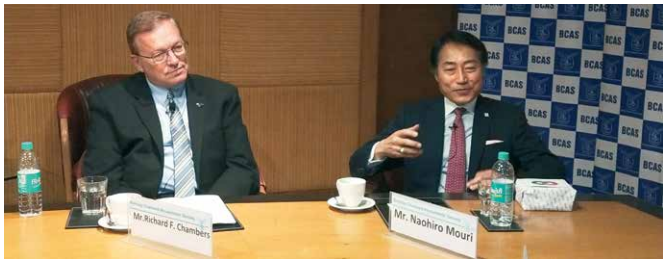










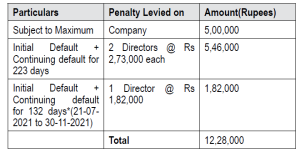

 It was also discussed how we can prioritize the different aspects of our life like Financial, Professional, Social, Personal, Physical, Spiritual and bring harmony and purpose in our life, while we grow as well as be happy all the time. The presenter taught how to overcome distractions in the way of accomplishments and retain the mindset to focus.
It was also discussed how we can prioritize the different aspects of our life like Financial, Professional, Social, Personal, Physical, Spiritual and bring harmony and purpose in our life, while we grow as well as be happy all the time. The presenter taught how to overcome distractions in the way of accomplishments and retain the mindset to focus.  This meeting was conceived by the Corporate and Allied Laws Committee of BCAS and was jointly organized with the BSE. Mr. Neeraj Kulshrestha (Chief of Business Operations – BSE) was the Guest of Honour, Mr. Ajay Thakur (Head – BSE SME) was the keynote speaker and Mr. Mahavir Lunawat, (Founder – Pantomath Group) was the speaker for the day. Mr. Kanu Chokshi (Chairman, Corporate & Allied Laws Committee) chaired the meeting. Mr. Raman Jokhakar (President, BCAS) welcomed the participants and highlighted the relevance of the topic in view of the proposed ‘Startup India’ and ‘Standup India’ initiatives, launched by the Government of India. Mr. Kanu Chokshi briefly introduced the speakers and the topic.
This meeting was conceived by the Corporate and Allied Laws Committee of BCAS and was jointly organized with the BSE. Mr. Neeraj Kulshrestha (Chief of Business Operations – BSE) was the Guest of Honour, Mr. Ajay Thakur (Head – BSE SME) was the keynote speaker and Mr. Mahavir Lunawat, (Founder – Pantomath Group) was the speaker for the day. Mr. Kanu Chokshi (Chairman, Corporate & Allied Laws Committee) chaired the meeting. Mr. Raman Jokhakar (President, BCAS) welcomed the participants and highlighted the relevance of the topic in view of the proposed ‘Startup India’ and ‘Standup India’ initiatives, launched by the Government of India. Mr. Kanu Chokshi briefly introduced the speakers and the topic. Moving to the product zone, the team saw samples of each product processed out of the refinery, namely Propylene, Naptha, Gassoline, Jet/Aviation Turbine Fuel, Sulphur, Petcock etc. Participants were fortunate to visit control room. The entire refinery is controlled from this area. The control room has earmarked the area for each unit – Fluid catalytic cracking unit (FCCU), clean fuel plant (CFP), Hydrogen manufacturing unit (HMU), Reliance tank farm (RTF ) and so on.
Moving to the product zone, the team saw samples of each product processed out of the refinery, namely Propylene, Naptha, Gassoline, Jet/Aviation Turbine Fuel, Sulphur, Petcock etc. Participants were fortunate to visit control room. The entire refinery is controlled from this area. The control room has earmarked the area for each unit – Fluid catalytic cracking unit (FCCU), clean fuel plant (CFP), Hydrogen manufacturing unit (HMU), Reliance tank farm (RTF ) and so on. 



